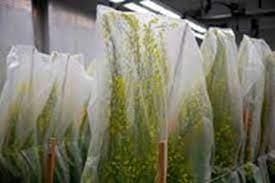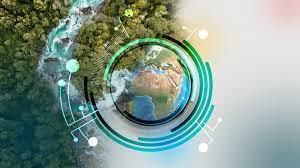Science & Technology - 2 | Current Affairs & Hindu Analysis: Daily, Weekly & Monthly - UPSC PDF Download
| Table of contents |

|
| Superconductivity |

|

|
|
| Green Hydrogen Standard |

|
| Graphene-Aurora Program |

|
| Low-pungent Mustard |

|
| Earth Observation (EO) |

|
Superconductivity
Recent publications have highlighted the potential discovery of a room-temperature superconductor. South Korean researchers have asserted that a lead-based compound, developed by them, exhibited superconducting characteristics at room temperature under standard pressure conditions.
Understanding Superconductivity
Superconductivity refers to a state where a material exhibits zero or extremely low resistance to the flow of electric current. Typically, this phenomenon has been observed in specific materials at extremely low temperatures, approaching absolute zero (-273.15°C or 0 Kelvin).
Key Aspects:
Zero Resistance:
- In superconductors, electrons can traverse the material without encountering any resistance.
Perfect Diamagnetism:
- Superconductors demonstrate perfect diamagnetism, actively repelling magnetic fields. When subjected to an external magnetic field, these materials expel magnetic flux lines, effectively excluding the magnetic field from their interiors.
Critical Temperature (Tc):
- Each superconductor possesses a critical temperature below which it exhibits superconducting behavior. Beyond this critical temperature, the material reverts to its normal state with resistive properties.
Meissner Effect:
- This effect involves the expulsion of a magnetic field from the interior of a superconductor during the transition to the superconducting state. The material can trap a magnetic field within its interior, preventing penetration.
Applications:
- The near-zero electrical resistance in superconductors has practical applications across various domains, including:
Energy Transmission:
- Efficient energy transmission with minimal loss.
Transportation:
- Superconductivity enables advancements in systems like Maglev trains and MRI machines.
Scientific Research:
- Critical for scientific experiments and equipment.
Materials Exhibiting Superconductivity:
Mercury:
- Mercury was the first material discovered to exhibit superconductive properties, becoming a superconductor at temperatures close to -270 degrees Celsius.
Common Superconductors:
- Materials like Lead, Aluminum, Tin, and Niobium are frequently used and exhibit superconducting characteristics.
- The exploration of superconductivity has paved the way for technological advancements, offering transformative possibilities in diverse fields.
News Summary: Why room temperature Superconductivity remains science’s elusive Holy Grail
- The two new papers uploaded on the internet, by researchers from South Korea, state the creation of a material known as LK-99.
- As per them, this material can conduct superconductivity at room temperatures.
- According to South Korean researchers, LK-99, the new superconductor, can be synthesised through a baking process that involves combining the minerals lanarkite (Pb2SOâ‚…) and copper phosphide.
- The resulting material exhibits two essential characteristics of superconductivity even at normal air pressure and temperatures as high as 127 degrees Celsius.
- The researchers have put forward a plausible theory explaining how LK-99 could achieve room-temperature superconductivity.
- They have not yet provided definitive experimental evidence to support their claims.
Why the quest for a room-temperature superconductor?
- In superconductors, a quantum phenomenon causes electrons to pair up allowing them to move through the structure of the material with remarkable ease and near-zero electrical resistance and no loss of energy.
- But that happens only at very low temperatures, typically near absolute zero or minus 273.15 degrees Celsius, and extremely high pressure.
- To achieve these conditions, you require costly and complex cooling systems like liquid helium for superconductivity to happen. This limitation has restricted their widespread practical applications.
- A room-temperature superconductor would exhibit superconducting properties at temperatures that are easily attainable and sustainable with conventional cooling methods.
- This could lead to transformative advancements in various industries at low costs.
Why room temperature superconductivity remains elusive?
- Material, showing superconductivity at room temperature, are expected to be much more complex than the normal superconductors (at low temperatures).
- Hence, these are much more difficult to synthesize, and keep stable.
Green Hydrogen Standard
Context:
In a notable development towards advancing the National Green Hydrogen Mission, the government has officially announced the Green Hydrogen Standard for India.
About the Green Hydrogen Standard
- The Ministry of New & Renewable Energy has established the Green Hydrogen Standard, defining Green Hydrogen as having a well-to-gate emission (inclusive of water treatment, electrolysis, gas purification, drying, and compression of hydrogen) not exceeding 2 kg CO2 equivalent per kg H2.
- The Bureau of Energy Efficiency (BEE), under the Ministry of Power, is designated as the Nodal Authority responsible for accrediting agencies for monitoring, verification, and certification of Green Hydrogen production projects.
- The standard encompasses both electrolysis-based and biomass-based hydrogen production methods.
Understanding Green Hydrogen:
- Hydrogen gas, generated through industrial methods like electrolysis, can serve as a fuel without emitting greenhouse gases (GHG) such as carbon dioxide (CO2) upon combustion. Green hydrogen is specifically hydrogen gas produced using renewable energy sources like wind or solar power, ensuring a lack of GHG emissions.
- Currently, a significant portion of globally produced hydrogen is utilized in the refining and industrial sectors, contributing to activities like ammonia production for fertilizers and steel manufacturing. In fuel cells, where the energy of a chemical is converted into electricity, hydrogen gas reacts with oxygen to generate electricity and water vapor.
Graphene-Aurora Program
The 'Graphene-Aurora program' was recently inaugurated by the Secretary of the Ministry of Electronics & Information Technology (MeitY) at an event held in Maker Village, Kochi, Kerala.
About the Graphene-Aurora Program
- The Digital University Kerala will be responsible for executing the Graphene-Aurora Program, jointly funded by the Ministry of Electronics & Information Technology (MeitY), the Government of Kerala, and industry partner Carborundum Pvt Limited, who has joined as a prominent industry collaborator.
- The program aims to cultivate a robust ecosystem for deep/emerging Graphene technology and innovation. This ecosystem will provide guidance, development, implementation, and support for SMEs and startups to commercialize graphene technologies for widespread adoption on a larger scale.
Significant Points about Graphene:
- Graphene is a carbon-based material extracted from graphite, commonly found in everyday items like pencil leads.
- It holds the distinction of being the world’s thinnest, strongest, and most conductive material for both electricity and heat.
- With superior electrical conductivity compared to copper, it is also 200 times stronger than steel yet six times lighter.
- Remarkably transparent, it absorbs only 2% of light.
- Graphene is impermeable to gases, including lightweight ones like hydrogen and helium.
- Establishing a commercialization ecosystem for graphene, as an emerging technology, is anticipated to position India at the forefront of the global market for new materials.
Low-pungent Mustard
Indian researchers have successfully engineered the inaugural low-pungent mustard variety that exhibits resistance to pests and diseases. This groundbreaking development offers a potential solution to the issues commonly encountered in the cultivation of traditionally grown oilseeds.
India's Primary Locally Cultivated Oilseed
Rapeseed-mustard stands as India's most prominent domestically grown oilseed. It holds a substantial share of 42.6% in the country's vegetable oil production, surpassing soybean's contribution of 19.2%. In terms of meal production, it accounts for 30.3%, second only to soybean's 38.9%, for the marketing year concluding in September 2023.
- Oilseeds play a dual role by providing cooking oil and a protein-rich residual cake used in livestock, poultry, and aqua feed.
- Challenges Associated with Traditional Rapeseed-Mustard Cultivation
High Glucosinolates Levels:
- Mustard seeds exhibit elevated levels of glucosinolates, a group of sulfur and nitrogen-containing compounds responsible for the characteristic pungency of their oil and meal.
- The excessive presence of glucosinolates poses a challenge to the acceptability of the oil, particularly for consumers preferring a milder flavor for cooking.
Issues with Residue Cake:
- Rapeseed meal presents challenges, especially in terms of digestibility for poultry and pigs.
- To make it suitable for cattle and buffaloes, the meal must be mixed with fodder grass and water.
- High glucosinolate content not only reduces feed intake but is also associated with health issues such as goiter (neck swelling) and internal organ abnormalities in livestock.
Research on Canola-Quality Mustard
To tackle the challenges associated with traditionally grown mustard seeds, extensive efforts have been invested in the past two decades in breeding rapeseed-mustard with Canola quality. This groundbreaking research has been conducted by scientists at Delhi University’s Centre for Genetic Manipulation of Crop Plants (CGMCP) in collaboration with the Indian Council of Agricultural Research.
Distinguishing Canola-Quality from Traditional Rapeseed-Mustard
Lower Glucosinolates:
- Normal mustard seeds (Brassica juncea) cultivated in India contain approximately 120-130 parts per million (ppm or mg/kg) of glucosinolates. In contrast, Canola seeds maintain sub-30 ppm levels.
- Scientists have successfully bred mustard lines with reduced glucosinolate content, aligning with the pungency standard of Canola-quality rapeseed (Brassica napus).
Challenges Encountered by Canola-Quality Mustard Seeds
- Large-Scale Cultivation Hurdle: Despite having lower glucosinolate levels, the adoption of large-scale cultivation for these Canola-quality seeds has been limited.
- Vulnerability to Pests and Diseases:Canola-quality seeds face challenges due to their susceptibility to pests and diseases. Lowering glucosinolate levels in seeds for oil and meal desirability weakens the overall plant's defense mechanism.
The New Breakthrough: Gene-Edited Mustard
In this innovative research, scientists targeted glucosinolate synthesis occurring in the leaves and pod walls of mustard plants. Using CRISPR/Cas9, a gene-editing tool, 10 out of the 12 GTR genes in the high-yielding Indian mustard variety 'Varuna' were edited. This technique involved creating mutations in the DNA sequence, rendering the encoded proteins responsible for glucosinolate transport non-functional.
Advantages of the Gene-Edited Mustard
- Balanced Glucosinolate Quantity: The resulting Varuna mustard variety, edited for targeted genes, exhibited glucosinolate content well below the 30-ppm Canola-quality threshold in seeds. Higher glucosinolate concentration in leaves and pod walls enhanced resistance against pests and diseases.
- High Resistance Against Pests and Diseases: GTR-edited lines demonstrated effective defense against a fungal pathogen and an insect pest, comparable to or better than wild-type mustard. Enhanced glucosinolate levels in leaves and pod walls contributed to this robust defense mechanism.
Difference Between GM and GE Crops
GE Mustard is Transgene-Free:
- GTR gene-edited mustard lines are transgene-free, distinguishing them from genetically modified (GM) crops.
- They contain no foreign genes, ensuring they are free from exogenous introduced DNA and transgenic elements.
Importance of the Breakthrough
Reducing Edible Oil Import Dependency:
- India, a significant importer of edible oils, spent $20.84 billion on imports during the fiscal year ended March 2023, covering over 60% of the country’s consumption.
- GE mustard and GM hybrid mustard can contribute to reducing India’s reliance on imported vegetable oils.
Increasing Crop Yield and Product Quality:
- With mustard and soybean being the most cultivated oilseed crops in India, advancements like GE mustard can enhance crop yields, resist pests, and improve product quality.
In Conclusion
The development of Gene-Edited Mustard by Indian scientists marks a remarkable achievement in the agricultural sector. This breakthrough has the potential to diminish India's dependence on vegetable oil imports, elevate crop yields, and significantly impact product quality.
Earth Observation (EO)
In a recent development, the Polar Satellite Launch Vehicle (PSLV-C52) successfully deployed the Indian Space Research Organisation's Earth observation satellite EOS-04 along with two smaller satellites, namely INSPIREsat-1 and INS-2TD, into their designated orbits. This mission marked the 54th launch of the PSLV rocket and the 23rd mission of its enhanced XL-version, featuring six strap-on boosters.
What are the Three Satellites Launched?
EOS-04:
- EOS-04, weighing 1,710 kg and designed for a mission life of ten years, aims to deliver high-quality images in diverse weather conditions. Its applications include Agriculture, Forestry, Plantations, Soil Moisture and Hydrology, and Flood mapping.
- The satellite will complement existing data from Resourcesat, Cartosat, and RISAT-2B satellites. Notably, EOS-01 was launched in November 2020, EOS-02 is pending launch on the SSLV (Small Satellite Launch Vehicle), and the launch of EOS-03 faced a setback in August 2021.
- EOS-04 will be positioned in a sun-synchronous polar orbit at an altitude of 529 km, serving as a radar-imaging satellite to replace the non-functional RISAT-1 launched in 2012. Radar imaging offers advantages over optical instruments, being unaffected by weather conditions, cloud cover, or sunlight availability, making it suitable for surveillance.
INSPIREsat-1:
- INSPIREsat-1 is part of the International Space Program in Research and Education (INSPIRE) and is linked with the Small-spacecraft Systems and Payload Centre (SSPACE) at IIST, University of Colorado (US), Nanyang Technological University (NTU), Singapore, and National Central University (NCU), Taiwan.
- With a mass of 8.1 kg and a mission life of one year, INSPIREsat-1 aims to enhance understanding of ionosphere dynamics and the sun's coronal heating processes through two scientific payloads.
INS-2TD:
- INS-2TD serves as a technology demonstrator for the inaugural India-Bhutan joint satellite scheduled for launch in March 2022. Following a space agreement between the two nations, the joint satellite, BhutanSat or INS-2B, will be launched on a PSLV rocket.
- INS-2TD, equipped with thermal imaging cameras, focuses on earth observation tasks such as assessing land and water surface temperatures and identifying forest and tree cover.
How many satellites does India have in space?
- India currently has 53 operational satellites, of which 21 are earth observation ones and another 21 are communication-based.
- Eight are navigation satellites, while the remaining three are science satellites.
|
38 videos|5293 docs|1118 tests
|
FAQs on Science & Technology - 2 - Current Affairs & Hindu Analysis: Daily, Weekly & Monthly - UPSC
| 1. What is superconductivity? |  |
| 2. What is the Green Hydrogen Standard? |  |
| 3. What is the Graphene-Aurora Program? |  |
| 4. What is low-pungent mustard? |  |
| 5. What is Earth Observation (EO) Science & Technology? |  |



















